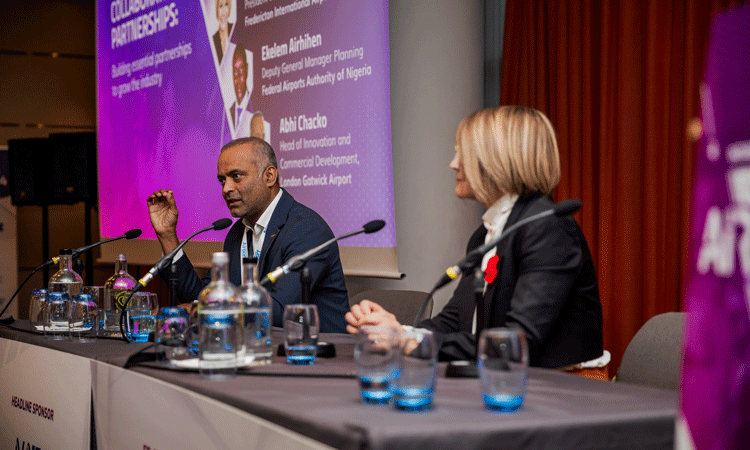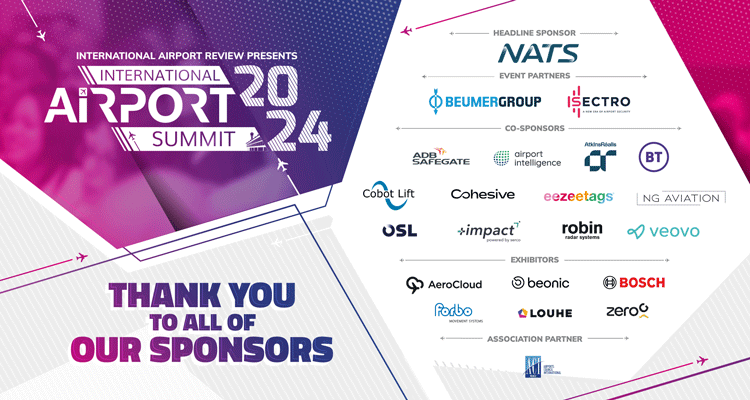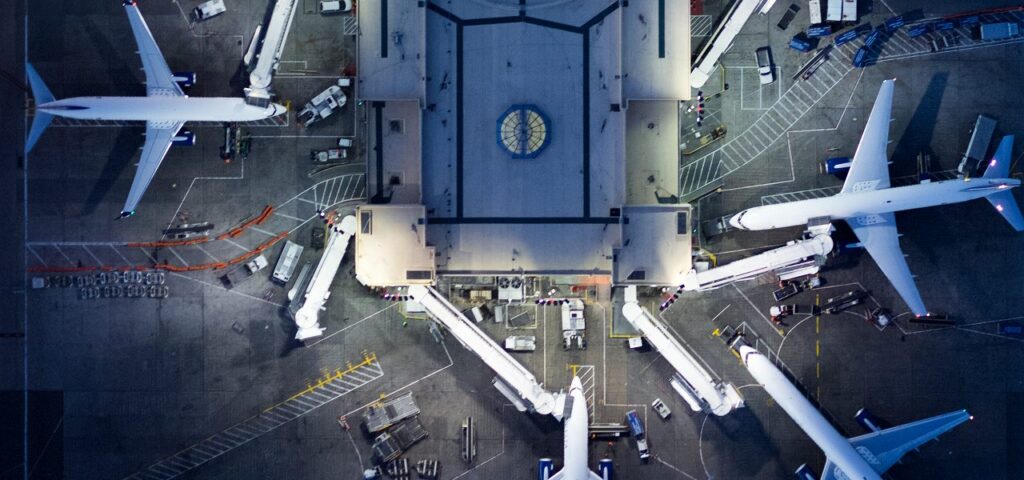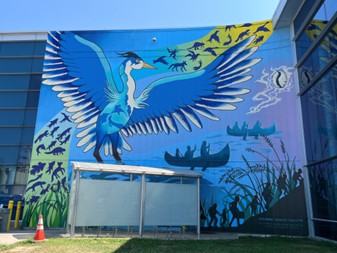In an exclusive interview at the International Airport Summit 2024, Abhi Chacko, the Head of Innovation at London Gatwick Airport, shared insight into the airport thinking approach for innovation and autonomous technology, and its impact on the airport ecosystem.


Abhi Chacko spoke at the International Airport Summit 2024. Credit: IAR.
Airports around the world actively explore autonomous technology and various uses in and around the Airport Terminal – and London Gatwick Airport (LGW) are no exception. The airport proactively integrates robotics and automation to encourage operational efficiency, improve labor skills and improve customer experience.
Specifically, Gatwick directed his attention to the autonomous wheelchair, semi-autonomous jet bridge and the transfer of autonomous bags.
Autonomous wheelchair
Gatwick exploration into autonomous technology has challenged their views.
“When we start thinking about this, I think wheelchairs and the use of autonomous technology in wheelchairs will be the last thing we will do when we apply autonomous technology at the airport,” Chacko admitted.
However, the trial exceeds expectations. “But after going through several trials, our level of confidence increased, and we were surprised that technology for wheelchairs was actually more mature than the technology available on airfields or campus.”
The implementation of micromobility autonomous technology is something that is considered by the airport. “Many of my colleagues are surprised and many people change my mind after seeing it work,” he added.
Autonomous wheelchair solutions increase independence for passengers who need assistance and free staff who are supposed to push wheelchairs, to help passengers in other areas.
Air Field Activities
Abhi believes that many airfield activities can be done using autonomous technology in the future, but also recognizing the challenges involved. “The use of autonomous technology in airfields will take time, and mainly because the large technology that is currently working on public roads is reluctant to come to the airport campus because for them the market is very small,” explained Chacko.
Apart from the reluctance of the main technology players, LGW actively collaborates with start-ups that focus on the campus environment. “At present we are working with two start-ups based in the UK to take such solutions going forward,” he said. This collaboration is directed to explore the transfer of autonomous baggage, robot taxis for passenger transportation and autonomous transportation for cabin crew.
Transfer of autonomous bags
LGW is in a single vehicle experimental phase, utilizing airport experience such as Singapore Changi and Hong Kong which is further in front of their trip. Realizing that technology transfer is not always smooth, LGW adapts to unique environmental characteristics. “Even though this technology works at one airport, it cannot be transferred immediately to another,” said Chacko. The surface difference between the airport requires additional technology. “Tarmak in Gatwick is not as smooth as Changi, so the camera requires additional mechanisms to handle rough surfaces,” Abhi explained.
Smart stand innovation
Gatwick has advanced its smart stand innovation, completed technical implementation at one stand and testing with Easyjet. “We started this concept two years ago. We have now completed technical implementation at one stand and trial with Easyjet before the summer of 2024. We stopped during the summer and will restart the operational trials from now until next summer,” Chacko said.
Smart stand innovation allows long distance turn coordination. “This is a collection of technologies that allow the turn coordinator to monitor and carry out activities turn from the remote control room,” explained Chacko. This approach allows the management team to focus on the exception and manage many turns simultaneously. “The team can manage several rounds at the same time,” he added. The ability to move the turn coordinator between the holder and one click increase efficiency. “They also do not need to travel from standing to standing, like now when they finish one holder and go to another. We can almost teleport the turns between the holder by clicking the button,” said Chacko.
Benefit
Smart stand innovation increases airport operations. “This reduces the turn time, reduces the number of cars in the airfield and increases security with anti-tabraking sensors,” Chacko said. This technology also enhances passenger experience. “With automatic safety procedures, the aircraft can park, connect the jet bridge from a distance and allow passengers to go down from a distance, even if the land staff is delayed,” he explained.
Smart stand innovation accelerates ramp operations. “Smart stand solutions accelerate road activities,” said Chacko.
Application -based passenger processing
Application -based solution is one of the elements that Chacko believes will produce good results in the next few years. Application -based solutions streamline processing, reduce queues and increase boarding.
Innovation failure
LGW takes a strategic approach to innovation, learning from other Vinci airports. “We carefully choose ideas to invest, compare notes with other Vinci airports,” said Chacko. Although careful planning, failure is part of the innovation process. “Failure is part of innovation and learning,” he added.
Robotic technology to remove FOD
One example is the exploration of robot technology to eliminate the debris of foreign objects (FOD). “We consider robot technology to eliminate FOD and spend time exploring this, but immediately realize that alternative safety procedures are more effective than technological solutions that are too fabricated and clumsy, so we have decided not to pursue certain tracks further,” Shako explained.
Inspiration from other industries
LGW attracts inspiration from Silicon Valley and the initial event to remain updated about the technology that appears.
Abhi is very interested in a car without a Waymo or Cruise driver for aircraft equipment. “Waymo or Cruise autonomous cars, which are designed for complex public roads, can revolutionize the operations of airfield equipment,” he added.
Management changes
“When applying new technology, you must bring people on your way”
Abhi stressed the importance of managing changes when introducing new technology. “When applying new technology, you must bring people on a trip with you,” he said.
Abhi has the top three tips for airport professionals who want to apply new ideas or technology with their team:
- Check your idea business value
Assessing the impact on stakeholders is very important. “Evaluate the value of your ideas by considering the four groups: airports, airlines, land and passengers. If you plan the Venn diagram of them and whether your idea is worth them, you should see your ideas at the intersection of various circles – ideally the four circles and therefore benefit the four groups,” said Chacko.
- Build consensus
Involving stakeholders through demonstrations and trials is key. “Airports such as mini cities, there are various stakeholders, priorities and different politics. It is not enough to discuss ideas through a series of slides. That will not make everyone rise and will not help everyone to understand or appreciate the value of new work and involve them.
- Lead from the front and willing to fail
Innovation requires leadership and risk taking. “Don’t be a bureaucrat, leave your destiny on excel-based priorities or play safe and only choose ideas that will work 100%. Supporting ideas that you believe, put your reputation on their path, even if they involve risks. The main thing is things that can be done by people who can make people can make people can make people can make people can make people can make people who can make them have their relevant grades, and then make people involved in this. Chasing, “suggested Chacko.
International Airport Summit
Chacko highlighted the value of industrial events to share knowledge. “Smaller events like International Airport Review The conference allows a more relaxed and deep discussion, “Shako noted. This event fosters a meaningful exchange and failure.”International Airport Review Creating an environment where you can share ideas about what is successful, what hasn’t been successful, and do it in a way that you can pay attention to and focus, which is actually very valuable, “he added.
Feeling like you were left behind? Well, right! Register here for the 2025 International Airport Summit and make sure you don’t suffer from FOMO anymore next year!





